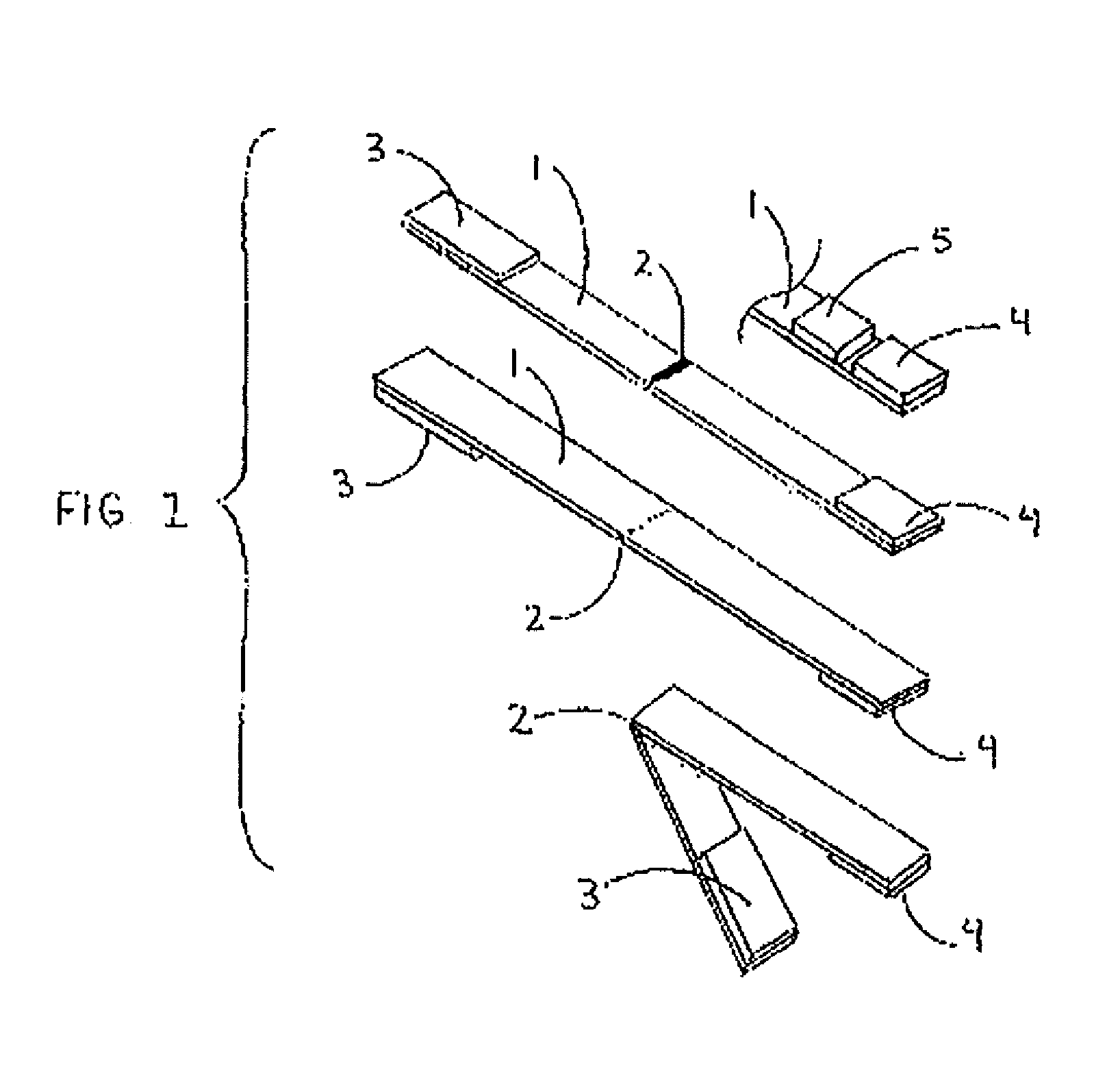Compositions, Apparatus and Methods for Monitoring Biomarkers
- Summary
- Abstract
- Description
- Claims
- Application Information
AI Technical Summary
Benefits of technology
Problems solved by technology
Method used
Image
Examples
example 1
Monitoring Saliva Nitric Oxide Analyte Using the Berkeley Test® Strips Resulted in an Increase Leafy Green Consumption
[0050]The objective of this survey was to assess whether knowing saliva nitric oxide levels increased leafy green consumption. The study subjects were told that leafy greens, such as spinach and arugula, are nitrate rich foods that the body converts to nitric oxide, a cardioprotective factor. They were asked to use the BERKELEY TEST® strips to measure nitric oxide levels before and two hours after consumption of their meals. Summary observation: 6 of 7 individuals who followed their saliva nitric oxide levels before and after their typical Meal, increased their servings of leafy greens by a factor of 2 to 3 per days, which is above their typical 1-2 day. The subjects' levels in the morning were typically less than approximately 25 umol / L and two hours post-meal, their levels—were around 200-400 umol / L. This simple survey suggested that by knowing that a cardioprotect...
example 2
Monitoring Saliva Nitric Oxide Analyte Before and Two Hours After Cardioprotective Diets in Context of Systolic BP
[0051]The objective of this survey was to assess whether saliva nitric oxide status correlated with systolic blood pressure (SBP) 2 hours after consuming a meal enriched with leafy green and beetroot that increased salivary levels above 400 uM within 2-3 hours. The subjects evaluated over a 2-3 hour period, were relatively healthy, non-medicated and prehypertensive (125430 mmHg). Summary observation: Individuals who exhibited an increase in saliva nitric oxide levels above 400 umol / L 2 hours after the consumption of a nitrate-rich meal consistently showed a 2-4 mmHg reduction in SBP.
Changes in Systolic Blood Pressure (mmHg)>+20−2−4Saliva Nitric Oxide status @ 22100Saliva Nitric Oxide status @ ≧400 umol / L01121
Having described the invention with reference to a particular device and method for collecting, transferring, and measuring NO analytes in saliva through a rapid, se...
example 3
Monitoring Saliva Nitric Oxide Analyte Using Berkeley Test ® Strips Resulted in an Increase in Exercise Frequency
[0052]The objective of this initial survey was to assess whether knowing saliva nitric oxide levels before and after exercise influenced the frequency of exercise. Summary observation: Individuals who followed their saliva nitric oxide levels before and after exercise, increased the frequency and in many instances the duration and intensity of their exercise routines. It was not uncommon to find relatively healthy, active individuals add 1 to 2 additional days per week of intense exercise when salivary nitric oxide levels increase post-exercise. Assuming pre-exercise levels were <20 umol / L (hence, this group either fasted or did not include nitrate rich foods into their diet for the past 12 hours), post-exercise level increased by a factor of 1.5. Diet, and exercise duration and intensity, as well as, physical condition of the individual dramatically influenced pre- and p...
PUM
| Property | Measurement | Unit |
|---|---|---|
| Time | aaaaa | aaaaa |
| Time | aaaaa | aaaaa |
| Molar density | aaaaa | aaaaa |
Abstract
Description
Claims
Application Information
 Login to View More
Login to View More - R&D
- Intellectual Property
- Life Sciences
- Materials
- Tech Scout
- Unparalleled Data Quality
- Higher Quality Content
- 60% Fewer Hallucinations
Browse by: Latest US Patents, China's latest patents, Technical Efficacy Thesaurus, Application Domain, Technology Topic, Popular Technical Reports.
© 2025 PatSnap. All rights reserved.Legal|Privacy policy|Modern Slavery Act Transparency Statement|Sitemap|About US| Contact US: help@patsnap.com

